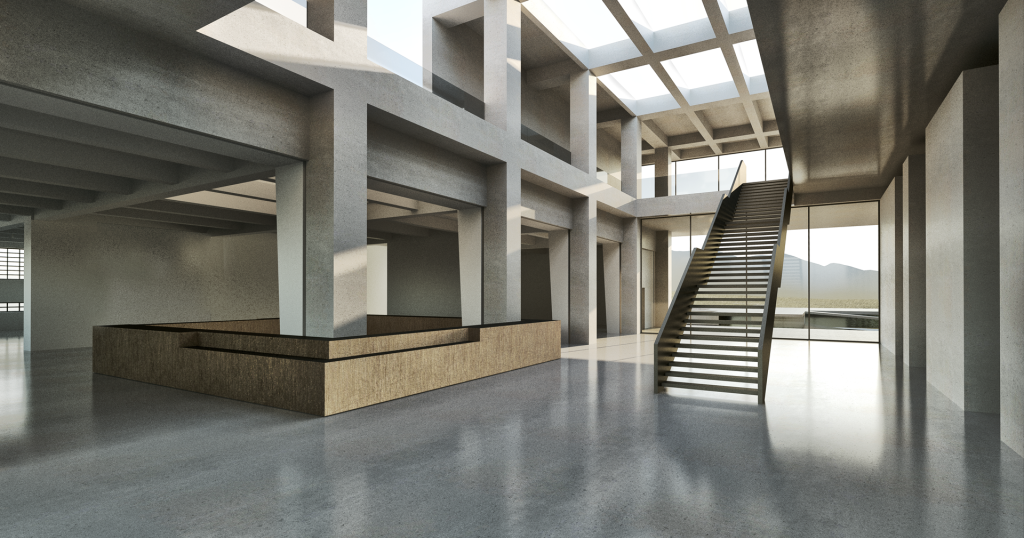New Archaeological Museum
Participation in architectural competition, 2019
Architects: Panos Dragonas, Lefteris Michaloutsos, Agapi Proimou, Varvara Christopoulou
Associates: Constantinos Moustakis, Eirini Kapetana, Theodora Gelali, Ntenia Stathatou
Structural engineer: Manos Kyriazis
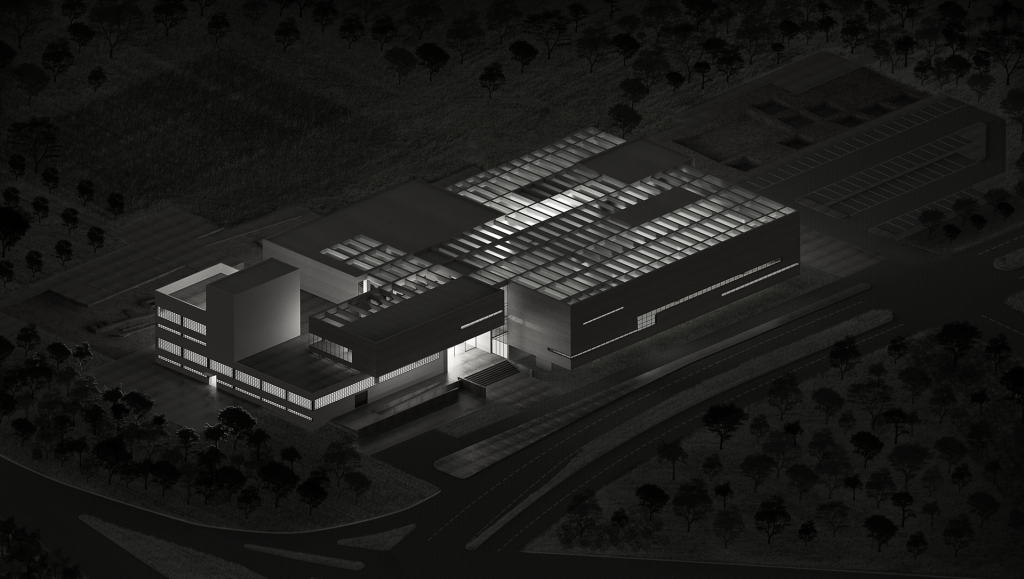
The architectural project for the New Archaeological Museum of Sparta (NAMS) adopts principles of industrial architecture both in the structure of the spaces and their morphology. The layout follows the rational grid of the old industrial complex in order to create a flexible building complex, which allows for the adaptation of the plans until the finalization of the museological study and, in the future, after the completion of the project. At the same time, the space around the museum is designed as a landscape-in-motion as the recreation activities and the outdoor exhibition of mosaics unfold around the ongoing excavation research.
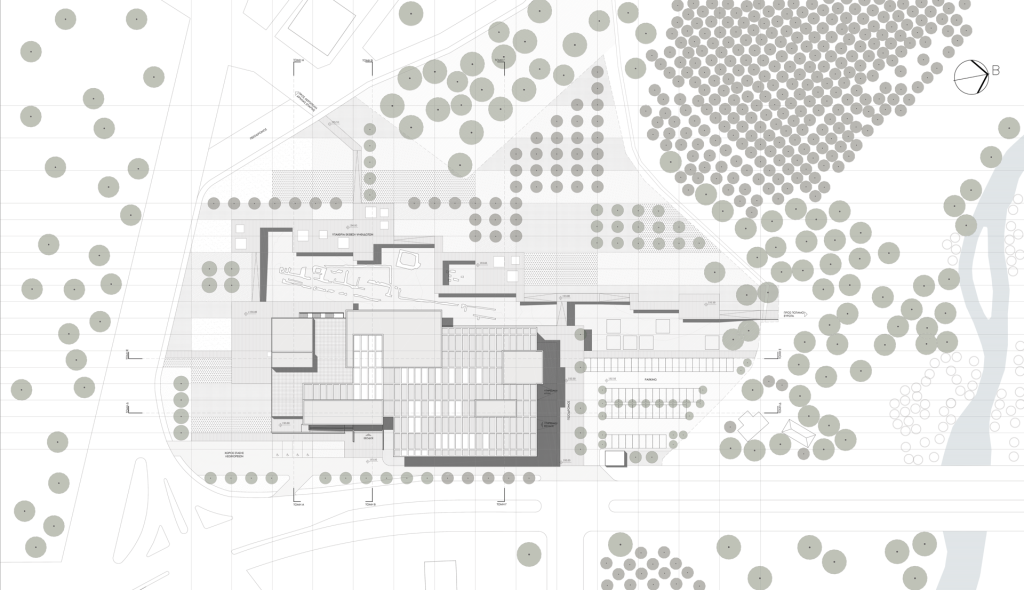
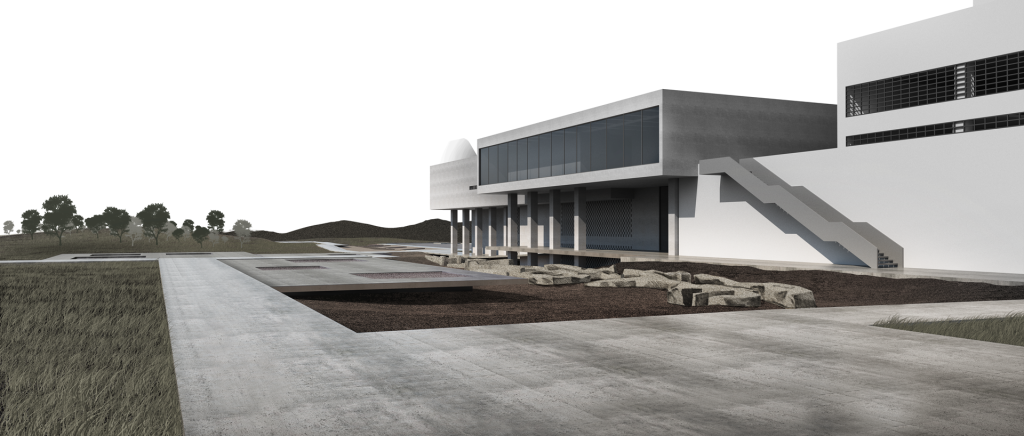

The NAMS building design is a composition of stereotomic volumes made of rough materials. The main lines and proportions are determined by the geometry and industrial character of the listed building while the morphology of its facades follows the architectural characteristics of the FIX factories.
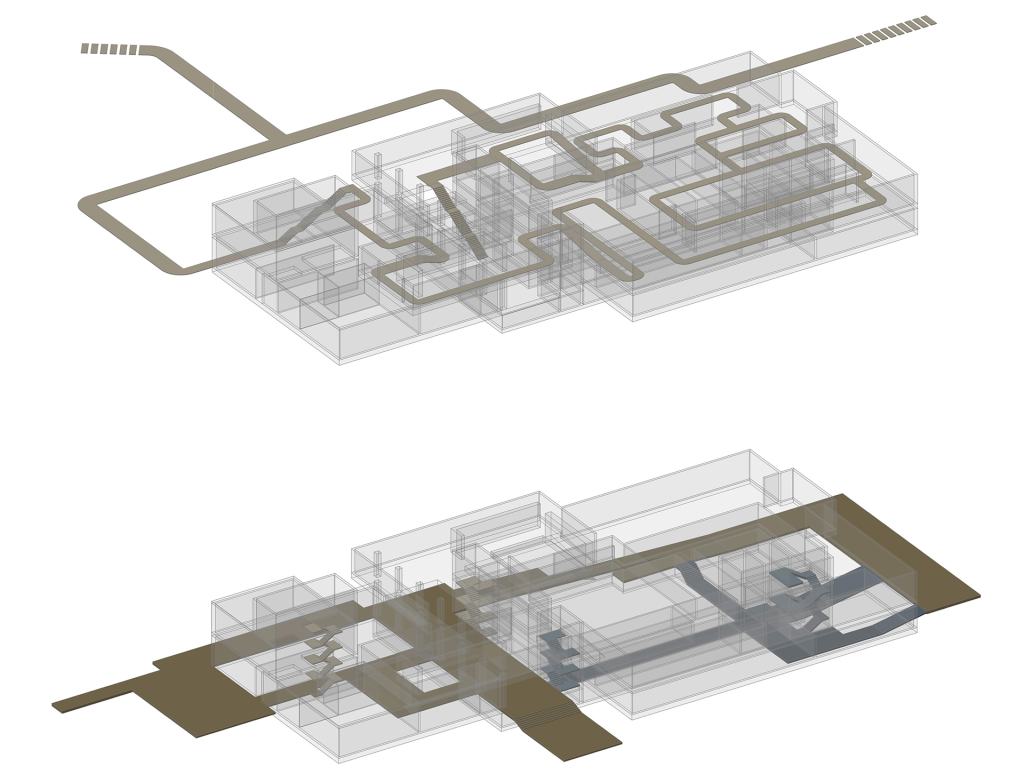
The building consists of three main parts: the preserved shell is a public free-access building that hosts the visitor service activities; the two lower floors of the extension include the warehouses, laboratories and administrative – scientific support offices; while the highest level of the new building houses the permanent exhibition. The concrete coffered ceiling which spans the entire exhibition space is extended over the listed building connecting thus the old building with its extension. In addition to the above, the in-between space of the central entrance articulates both functionally and symbolically the three main parts of the NAMS.
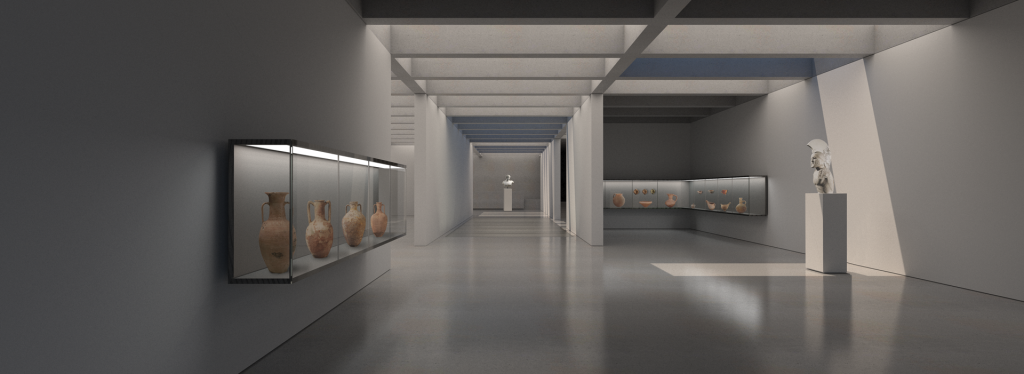
The connection between the NAMS and its locus is defined by the direct view to the historical landscape of Laconia and the natural light of the place. The building composition reveals different views of the surrounding landscape, while the museum design gives visitors the opportunity to admire the exhibits under the light in which they were created.
